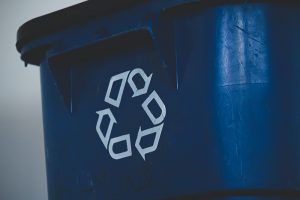
The issue of industrial waste disposal should be an important issue for all of us. After all, improperly disposed of industrial waste can result in hazardous conditions for humans while raising large environmental concerns in regards to both landfill waste management and marine acidification.
Why is it so important? Because it’s a large issue. According to the Environmental Protection Agency’s Guide for Industrial Waste Management, approximately 7.6 million tons of industrial waste are generated and disposed of.
Currently, using landfills for waste materials is still the most widespread and least expensive method of industrial solid waste disposal in the world. However, it is also a major source of ecological contamination.
Modern landfills have been designed as highly engineered containment systems, designed and developed to minimize the impact of solid waste on the environment and ultimately on human health. That said, they are as of yet incapable of providing a permanent 100% ecological solution.
 Along with these emerging concerns and needs for better management of industrial waste, new and advanced technologies in the field of trash compactor waste removal have been required.
Along with these emerging concerns and needs for better management of industrial waste, new and advanced technologies in the field of trash compactor waste removal have been required.
For example, pretreatment technologies (treating the industrial waste before final disposal) have proven to be beneficial in reducing the volume of waste destined for landfills. Pretreatment also enhances and in some cases accelerates the stabilization of the industrial waste, decreasing the long-term environmental concerns.
In minimizing the aforementioned waste meant for landfills, proper pretreatment can reduce the potential for long-term adverse and detrimental effects on the environment.
How Industrial Waste Contamination Can Occur – Landfills
In modern landfills, industrial waste is isolated from the groundwater by a base seal system. Additionally, the landfill cover systems are designed to prevent or control the intrusion of rainwater into the landfill and the release of both toxic fumes and harmful gasses from the waste.
Ideally, industrial waste is deposited when conditions are dry and is compacted and buried beneath a daily cover of clay or other solid. Anaerobic bacteria then helps facilitate microbial degradation.
Although the infusion of water is minimized as far as possible, the inherent moisture content of the waste and some input from rainfall is sufficient to produce a ‘landfill liquid’ that drains to the bottom of the waste pile. If not properly maintained, this can prove to be a hazardous environmental concern.
Methane gas, which rises through the waste pile, is also a significant issue. Industrial waste landfill management is thus perpetually assessing the presence of both ‘landfill liquid’ and methane to prevent harm to humans and other environmental concerns that might arise from their escape.
How Industrial Waste Contamination Can Occur – Oceans
 In October 1972, Congress enacted the Marine Protection, Research, and Sanctuaries Act (MPRSA), aka The Ocean Dumping Act, declaring that it is the policy of the United States to regulate the dumping of all waste materials which would adversely affect human health or the marine environment, ecological systems, or economic potentialities.
In October 1972, Congress enacted the Marine Protection, Research, and Sanctuaries Act (MPRSA), aka The Ocean Dumping Act, declaring that it is the policy of the United States to regulate the dumping of all waste materials which would adversely affect human health or the marine environment, ecological systems, or economic potentialities.
Hazardous waste disposal and disposal of other waste materials into marine environments degrades oceans and natural resources and poses potential human health risks. The effects of improper disposal of industrial waste include immediate and long-term effects such as ocean acidification.
Acidification from contaminated water sources can harm ocean life and lead to a degradation of biodiversity. Additionally, some research has found that the improper disposal of biodegradable plastics may lead to secondary microplastic accumulation in the marine environment because traditional synthetic polymers are involved in some biodegradable plastics, which are not biodegradable. This allows for the prospect of a damaged marine environment and ultimately necessitates human action to reverse any damage done to oceans.
The Importance of Responsible Waste Management
Responsible waste management involves the proper collection, transportation, and processing of industrial waste, staying on top of all of the requirements and protocols, and maintaining safety in the workplace while also protecting the environment and limiting liability.
New technologies like KenBay’s RotoPac Industrial Trash Compactor can fill this tall order of processing necessary inevitable waste while protecting the environment. The only U.S. supplier of rotary continuous compaction machines, KenBay can also drastically reduce the expense of transporting waste. With a 6:1 compaction rate, you are guaranteed to be shipping waste and not air.
Look out for your company’s bottom line and the environment around you while improving your safety compliance by minimizing the handling of waste materials.
Contact one of our professionals today to discuss how our industrial trash compactor can help you do both.


